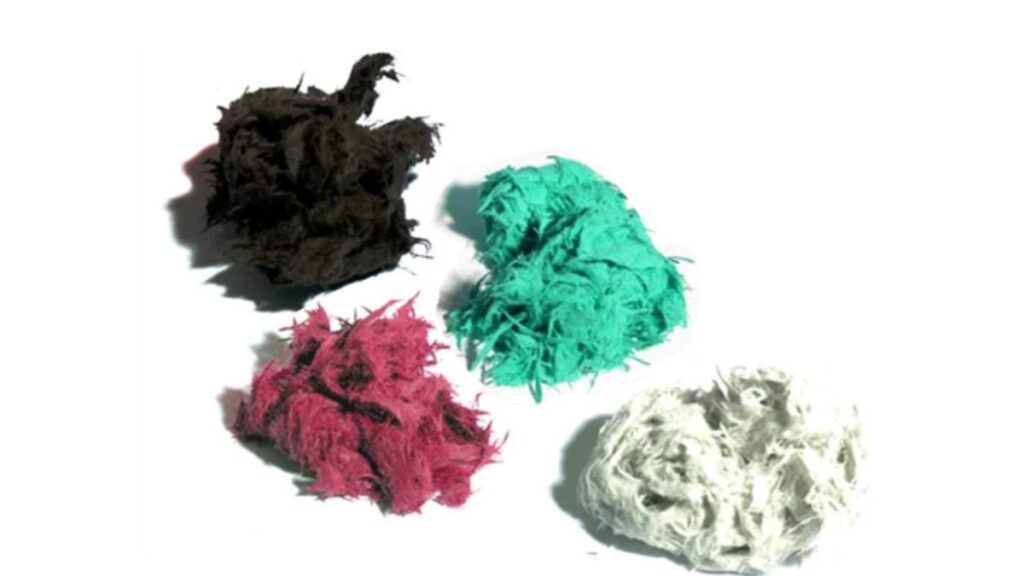In today’s rapidly evolving manufacturing landscape, innovation in materials plays a crucial role in shaping products that are both high-performing and cost-effective. One such material gaining traction across various industries is Dough Moulding Compound , commonly abbreviated as DMC . This thermoset composite material has revolutionized the way engineers and manufacturers approach molding processes, especially when precision, strength, and thermal resistance are required.
But what exactly is dough moulding compound? Why is it preferred over other molding compounds like Sheet Molding Compound (SMC) or Bulk Molding Compound (BMC)? And how does it contribute to modern industrial applications?
This comprehensive guide dives deep into the world of DMC, exploring its properties, uses, advantages, and real-world applications. Whether you’re an engineer, product designer, or simply curious about advanced composite materials, this article will provide you with all the insights you need.
What Is Dough Moulding Compound (DMC)?
Dough Moulding Compound (DMC) is a type of thermoset molding compound primarily used in compression molding processes. It is composed of a mixture of resins, fillers, reinforcing fibers (typically glass fiber), and various additives. The consistency of DMC resembles dough, which gives it its name. This unique texture allows for greater flexibility during the molding process, making it ideal for producing complex shapes with high dimensional accuracy.
The resin matrix in DMC typically consists of polyester, vinyl ester, or epoxy resins, while the filler content can include calcium carbonate, silica, or talc. Reinforcement comes from chopped glass fibers, which enhance mechanical strength and rigidity. Additives may include mold release agents, pigments, and flame retardants, depending on the end-use requirements.
DMC is known for its excellent flow characteristics, which allow it to fill intricate molds completely without voids or defects. Once cured under heat and pressure, DMC forms a rigid, durable part that retains its shape and structural integrity even under harsh conditions.
How Is DMC Different From Other Molding Compounds?
To fully appreciate the value of DMC, it’s important to compare it with other similar molding compounds such as Sheet Molding Compound (SMC) and Bulk Molding Compound (BMC) . While they share some similarities, each has distinct features that make them suitable for specific applications.
From the table above, we can see that DMC strikes a balance between moldability and production efficiency. Unlike SMC, which requires expensive tooling and is better suited for large, flat surfaces, DMC is more versatile for smaller, complex parts. Compared to BMC, DMC offers better fiber distribution and higher strength-to-weight ratios.
Manufacturing Process of DMC Parts
The production of parts using dough moulding compound involves several key steps:
- Material Preparation : DMC is typically supplied in pre-mixed batches, ready for use. The material is kept at room temperature until it’s time for molding.
- Charge Placement : A measured amount of DMC is placed into the open mold cavity. The charge weight depends on the size and complexity of the part being produced.
- Mold Closure : The mold is closed under high pressure, forcing the DMC to flow and conform to the mold’s shape.
- Heating and Curing : Heat is applied to initiate the curing process. The duration and temperature depend on the resin system used and the thickness of the part.
- Demolding : Once the part is fully cured, the mold opens, and the finished component is removed.
- Post-Processing : Depending on the application, parts may undergo trimming, drilling, painting, or assembly.
One of the standout features of DMC processing is its low-pressure requirement compared to injection molding. This reduces wear and tear on machinery and lowers energy consumption, contributing to cost savings and sustainability.
Key Properties of Dough Moulding Compound
DMC stands out due to its impressive combination of physical and chemical properties. Here are some of the most notable characteristics:
- High Mechanical Strength : Thanks to the inclusion of glass fibers, DMC parts exhibit excellent tensile and flexural strength.
- Thermal Resistance : DMC can withstand elevated temperatures without deforming, making it suitable for engine compartments and electrical enclosures.
- Chemical Resistance : Resistant to oils, fuels, solvents, and many corrosive substances, DMC is ideal for automotive and industrial environments.
- Dimensional Stability : DMC maintains its shape and size even after prolonged exposure to environmental stressors.
- Electrical Insulation : Certain formulations of DMC offer superior dielectric properties, making them perfect for electrical and electronic housings.
- Fire Retardancy : With the addition of flame-retardant additives, DMC can meet stringent safety standards in aerospace and transportation sectors.
These properties make DMC a preferred choice in industries where performance under stress and longevity are critical.
Common Applications of DMC Across Industries
Thanks to its versatility and robustness, dough moulding compound finds use in a wide range of industries. Let’s explore some of the major sectors benefiting from DMC technology.
Automotive Industry
DMC is extensively used in the automotive sector for manufacturing under-the-hood components such as:
- Valve cover gaskets
- Timing belt covers
- Oil pan liners
- Intake manifolds
Its ability to resist heat and chemicals makes it ideal for these demanding applications. Additionally, DMC helps reduce vehicle weight, contributing to improved fuel efficiency and emissions reduction.
Electrical and Electronics
In the electrical industry, DMC is used to produce:
- Switchgear housings
- Circuit breaker enclosures
- Terminal blocks
- Relay boxes
Its insulating properties and fire-resistant variants ensure safety and reliability in power systems and control panels.
Industrial Equipment
Manufacturers of industrial machinery rely on DMC for:
- Pump housings
- Motor covers
- Conveyor components
- Control panels
DMC’s durability ensures long service life even in harsh operating environments.
Aerospace and Defense
While not as common as carbon fiber composites, DMC is used in non-critical but high-performance components such as:
- Cabin interior panels
- Avionics housings
- Radar covers
Its lightweight nature and resistance to vibration make it suitable for aerospace applications.
Consumer Goods
DMC also finds niche applications in consumer products like:
- Kitchen appliances
- Power tools
- Lawn equipment
It provides a durable, aesthetically pleasing finish while maintaining functionality.
Advantages of Using Dough Moulding Compound
Choosing the right material is essential for any manufacturing project. Here are some of the top advantages of using DMC:
Design Flexibility : DMC can be molded into complex geometries, allowing designers to create intricate parts without compromising structural integrity.
Cost-Effective Production : Lower tooling costs and reduced scrap rates make DMC an economical option, especially for mid-volume production runs.
Lightweight Yet Strong : DMC offers a favorable strength-to-weight ratio, making it ideal for applications where weight savings are important.
Corrosion Resistance : Unlike metals, DMC doesn’t rust or corrode, making it ideal for outdoor or marine environments.
Reduced Assembly Needs : Many DMC parts integrate multiple functions into one component, reducing the need for additional fasteners or sub-assemblies.
Environmental Benefits : DMC can be formulated with recycled materials and produces minimal waste during manufacturing, supporting green initiatives.
Challenges and Considerations When Using DMC
While DMC offers numerous benefits, there are a few challenges and considerations that manufacturers should keep in mind:
- Longer Cure Times : Compared to thermoplastics, DMC requires longer curing times, which can slow down production cycles.
- Limited Reusability : As a thermoset material, DMC cannot be re-melted or reshaped once cured, limiting recycling options.
- Surface Finish Limitations : Without post-processing, DMC parts may have a textured surface that isn’t always suitable for aesthetic applications.
- Initial Material Cost : Although overall production costs are lower, the initial raw material cost of DMC can be higher than some alternatives.
Despite these limitations, the advantages often outweigh the drawbacks, especially when performance and durability are top priorities.
Future Trends and Innovations in DMC Technology
As industries continue to evolve, so too does the development of dough moulding compound. Researchers and manufacturers are constantly working on improving DMC formulations to meet new demands.
Some emerging trends include:
Bio-based Resins : Efforts are underway to develop DMC using bio-sourced resins to reduce dependence on petroleum-based materials and improve sustainability.
Nanocomposite Additives : Adding nanomaterials like graphene or carbon nanotubes can significantly enhance mechanical and thermal properties.
Electric Vehicle Components : With the rise of EVs, DMC is being explored for battery housings and motor components due to its insulation and fire-resistant properties.
Custom Color Options : Advances in pigment technology allow for broader color customization without affecting performance.
Improved Recycling Methods : New techniques are being developed to reclaim and reuse DMC waste, reducing landfill impact.
These innovations suggest a bright future for DMC, positioning it as a key player in the next generation of composite materials.
Conclusion: Why DMC Deserves Your Attention
In summary, dough moulding compound is a powerful and versatile material that bridges the gap between performance and practicality. Its ability to deliver strong, durable, and dimensionally stable parts at a reasonable cost makes it a go-to solution for industries ranging from automotive to electronics.
Whether you’re designing a new product or optimizing an existing one, considering DMC could open up new possibilities in terms of design freedom, material efficiency, and environmental responsibility. As research continues and new formulations emerge, DMC is set to play an even bigger role in shaping the future of manufacturing.
So, if you’re looking for a reliable, high-performance composite material that can stand up to the toughest challenges, don’t overlook the potential of dough moulding compound . It might just be the answer you’ve been searching for.







